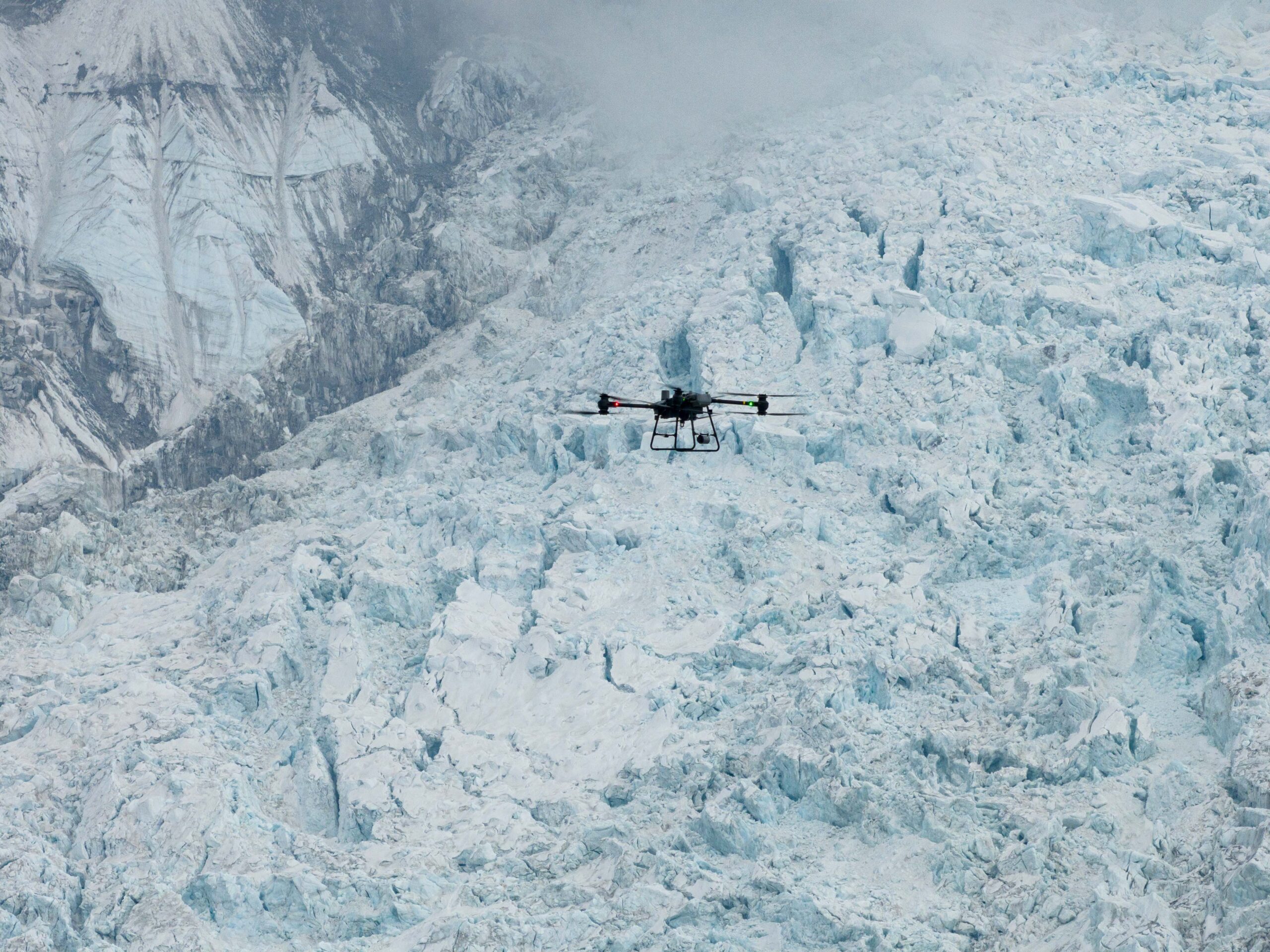Nepali drone firm Airlift makes use of DJI know-how to ship oxygen, scout routes, and take away waste—making Everest expeditions safer for sherpas and climbers.
by DRONELIFE Workers Author Ian J. McNabb
A Safer Method to Scale the World’s Tallest Peak
After testing concluded final yr, Nepali drone firm Airlift will start deliveries of vital provides to Everest camps, revolutionizing the harmful native transport trade and making the world’s tallest mountain just a bit bit safer. Utilizing DJI FlyCart drones, Airlift will carry wanted provides and scout routes for native sherpas whereas carrying down trash, serving to to unravel Everest’s litter situation whereas making traversing the icy peak much less lethal.


Confirmed Success at Excessive Altitudes
Final yr, DRONELIFE reported on the trials that served as a proof-of-concept for the drone flights. In the course of the take a look at, three oxygen bottles and 1.5kg (3.3lbs) of different provides had been flown from the Everest Basecamp (already at a dizzyingly excessive 17,000 ft above sea degree) as much as Camp 1, at almost 20,000 ft of elevation. On the return journey, the drone carried trash.
Navigating the Khumbu Icefalls
The 2 camps are separated by the Khumbu Icefalls, one of the perilous components of the ascent, making it troublesome to hold provides between the 2 areas. Whereas helicopters might theoretically full the identical supply, that is cost-prohibitive and environmentally irresponsible, to not point out the risks of working in such a chilly, oxygen-low atmosphere. As an alternative, historically, this harmful activity falls upon sherpas, who should bodily carry provides on this typically perilous atmosphere.
Drones Help, However Sherpas Nonetheless Lead the Method
Now, Airlift hopes drones can help native guides. Milan Pandey, the pilot working the DJI drones that energy the challenge, operates flights out of Everest basecamp additional up the hill. In accordance with CNN, the Sherpas inform Pandey which route they should go, then Pandey flies a small drone first to navigate the path.


Whereas sherpas nonetheless want to hold most provides themselves, in addition to traverse the hill utilizing their very own abilities, drones could make passing via the Khumbu icefalls simpler.
“As soon as they discover out ‘right here we’d like a ladder,’ ‘right here we’d like a rope,’ they are going to ship us the coordinates by way of walkie-talkie after which we fly the gear there,” Pandey defined. The drones are additionally in a position to fly in life-saving gear like oxygen cylinders and medicines.
Tragedy Sparks Innovation
Mingma G Sherpa of Think about Nepal instructed CNN that he acknowledged the necessity for drones after a lethal avalanche took 3 of his associates and fellow mountain guides. Like most deaths on the mountain, their our bodies couldn’t be recovered.
“They needed to preserve going up and down the mountain twenty instances to first work out the route after which come again for the gear. I had heard they use drones in China to assist with this on one other mountain, so I believed ‘why not right here?’” he mentioned.


Miriam McNabb is the Editor-in-Chief of DRONELIFE and CEO of JobForDrones, an expert drone companies market, and a fascinated observer of the rising drone trade and the regulatory atmosphere for drones. Miriam has penned over 3,000 articles targeted on the industrial drone area and is a world speaker and acknowledged determine within the trade. Miriam has a level from the College of Chicago and over 20 years of expertise in excessive tech gross sales and advertising for brand spanking new applied sciences.
For drone trade consulting or writing, E mail Miriam.
TWITTER:@spaldingbarker
Subscribe to DroneLife right here.